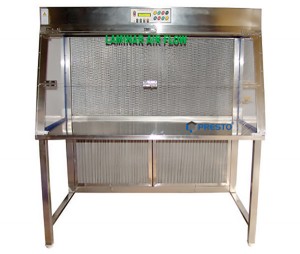Microbiological Laboratory, is the prime centre for microorganism based research. It includes testing and evaluation the contamination load in distinct substances, research on particular strain or species of organism, and evaluation of infection level in human samples. When this level of critical steps are taken, one have to be sure that one microorganism must be not mixed up with another and creates unwanted growth. In this post we will learn about the role of Laminar Air Flow Chamber in ensuring a secure contamination free environment.
Laminar flow is defined as airflow in which the entire body of air within a designated space is uniform in both velocity and direction.
According to the CDC, the laminar air flow principle was first developed in the early 1960s. It’s still incredibly relevant for modern labs, having literally shaped the way air safely moves in many generations of laboratory enclosures. Today, many categories of laminar flow hoods exist. Although they differ depending on the science performed within, there is one common denominator: all use this type of unidirectional airflow to aid in maintaining sterility, preventing cross-contamination and reducing turbulence.
What is zoned airflow?
Zoned airflow is not truly laminar. Zoned airflow is used when equipment cannot achieve all of the protection required of a Class II biosafety cabinet with standard laminar airflow. Each zone, or column, of airflow is defined and has its own range in airspeed. This allows for higher speed barrier air columns to be utilized as an engineering solution to equipment that otherwise would have poor containment or product protection ratings.
How does laminar flow differ from dilution flow?
Dilution flow is not the same as laminar air flow. The dilution flow principle is used in equipment such as filtered glove boxes. In these instances, HEPA-filtered air mixes with and dilutes interior airborne contaminants inside the glove box, and those contaminants are removed via a filtered exhaust system. After the contamination source has been sealed, the dilution rate—or air changes per minute—will determine how much time must lapse before materials can be removed from the main chamber.
Laminar Air flow plays a significant role in the testing laboratories as these chambers help to make the environment clean and free from dust and contaminants that are generated from the chemicals during testing. The laminar air flow chambers are the best options to make the environment clear and provide safe and clean working environment to the workers also. The instrument is ergonomically designed using high quality of materials and state of the art technology that grab all the dust and contaminants from the environment and exhaust it out from the laboratory.
Presto Stantest offers high-quality of Laminar Air Flow Chamber to the testing laboratories to create a clean and dust free environment that allows the user to get highly accurate and best working environment.
For more information about the product, just contact our experts.
